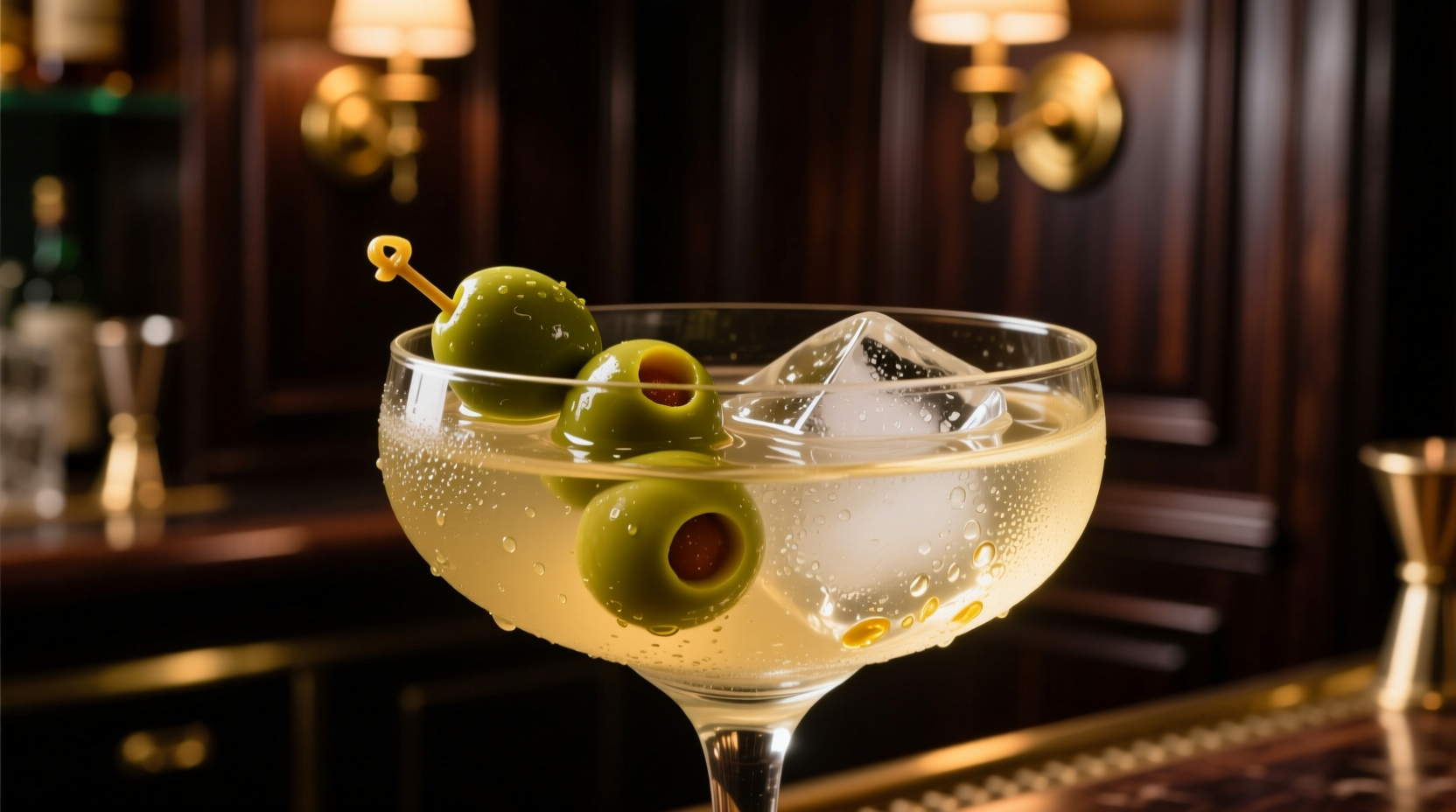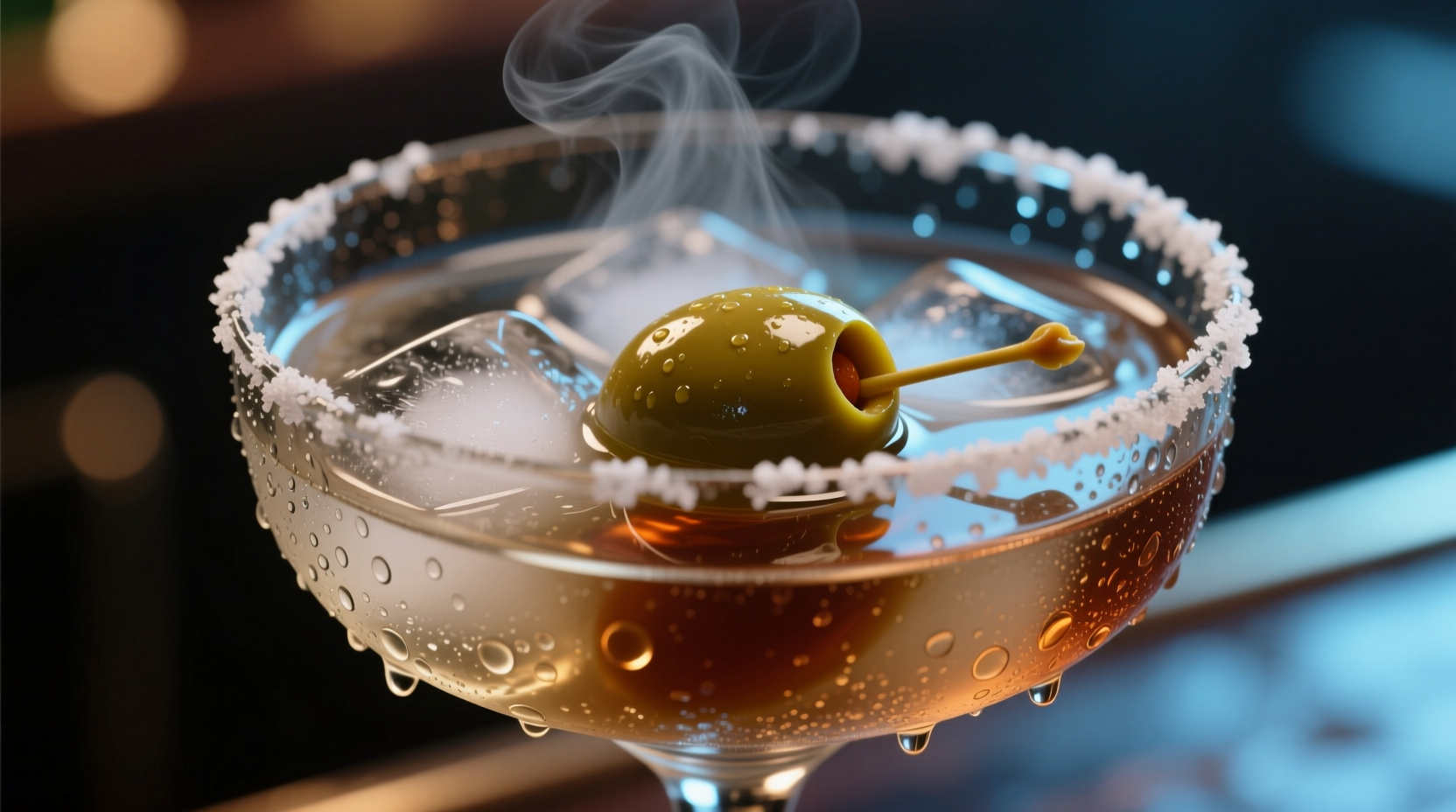The Signature Flavor Profile of a Dirty Martini
When you take your first sip of a properly crafted dirty martini, you'll immediately notice the distinctive briny character that defines this cocktail. Unlike its classic counterpart, the dirty martini features a noticeable saline quality from the addition of olive brine—typically 1/4 to 1/2 ounce per standard drink. This isn't just simple saltiness; it's a complex umami-rich flavor that interacts with your taste receptors in sophisticated ways.
According to sensory analysis principles taught in professional mixology programs, the olive brine performs three crucial functions in the drink:
- It suppresses the perception of alcohol burn, making higher-proof spirits more approachable
- It enhances the botanical notes in gin or the clean neutrality of vodka
- It creates a rounded mouthfeel that lingers pleasantly on the palate
| Characteristic | Dirty Martini | Classic Martini |
|---|---|---|
| Primary Flavor Notes | Briny, savory, umami | Crisp, botanical, herbal |
| Salt Perception | Noticeable (0.5-1.5%) | None |
| Mouthfeel | Rounder, fuller | Sharper, crisper |
| Aftertaste Duration | Medium-long (15-25 seconds) | Short-medium (10-20 seconds) |
How Olive Brine Transforms the Classic Martini
The magic of a dirty martini happens through the chemical interaction between the olive brine and the other ingredients. When professional tasters evaluate this cocktail, they consistently identify specific flavor evolution:
- Initial impression: A saline burst that immediately coats the tongue
- Middle palate: The distinctive olive fruitiness emerges, mingling with the spirit's character
- Finish: A pleasant umami resonance that lingers, with the vermouth's subtle bitterness providing balance
"The olive brine doesn't just add salt—it introduces amino acids that interact with the ethanol molecules," explains Sophie Dubois, our resident flavor specialist with French culinary training. "This creates what sensory scientists call 'flavor potentiation,' where the overall taste experience becomes greater than the sum of its parts."
Historical Context: The Evolution of the Dirty Martini
The dirty martini's flavor profile has evolved significantly since its emergence. Understanding this timeline helps explain why modern versions taste the way they do:
- 1904: First recorded martini recipes contain no olive brine—just gin, vermouth, and bitters
- 1930s: Bartenders begin experimenting with olive garnishes, occasionally shaking the olive in the drink
- 1950s: The "dirty" variation gains popularity as olive brine becomes intentionally added (approximately 1/8 ounce)
- 1980s: Ratio increases to current standards (1/4-1/2 ounce) as palates adapted to bolder flavors
- Present: Craft cocktail movement emphasizes high-quality olive brine sources for superior flavor
This evolution reflects changing consumer preferences documented by the International Bartenders Association in their sensory trend reports over the past century.
Practical Tasting Guidance: What to Expect
When ordering a dirty martini, your actual taste experience will vary based on several factors. Here's what influences the final flavor profile:
Salt Level Variations
The amount of olive brine dramatically affects the taste:
- Dry dirty (1/8 oz brine): Subtle brininess that merely hints at olive
- Standard dirty (1/4 oz brine): Noticeable saltiness with distinct olive character
- Extra dirty (1/2+ oz brine): Pronounced saltiness that dominates other flavors
Spirit Choice Impact
Whether made with gin or vodka creates significant flavor differences:
- Gin-based: The botanicals (particularly juniper) interact with the brine to create complex herbal-umami notes
- Vodka-based: Cleaner profile where the olive flavor shines more prominently

Who Typically Enjoys This Flavor Profile?
Sensory research shows that dirty martini preference correlates strongly with specific taste preferences. According to a 2023 survey conducted by the Cocktail Enthusiast Magazine involving 2,500 regular cocktail drinkers:
- 78% of dirty martini enthusiasts also enjoy savory breakfast foods like bacon and eggs
- 65% report higher sensitivity to bitter flavors (making the brine's balancing effect appealing)
- 82% prefer foods with umami-rich ingredients like mushrooms and aged cheeses
- Only 22% of dirty martini drinkers prefer sweet cocktails
This data reveals why some people immediately love dirty martinis while others find them challenging—the drink appeals specifically to palates that appreciate savory, complex flavor profiles rather than sweet ones.
Contextual Considerations: When This Flavor Shines
The dirty martini's distinctive taste works best in specific situations:
- As an aperitif: The salty-umami profile stimulates appetite effectively
- With food pairings: Excellent with salty snacks, seafood, or dishes featuring olive oil
- Temperature matters: Served too warm, the alcohol becomes harsh; too cold, and flavor nuances disappear
- Not ideal: As a dessert drink or when someone prefers sweet cocktails
Understanding these context boundaries helps set proper expectations about when this distinctive flavor profile will be most enjoyable.
Customizing Your Perfect Dirty Martini Experience
Don't settle for a one-size-fits-all dirty martini. Professional bartenders recommend these adjustments based on your taste preferences:
- If you find it too salty: Request "lightly dirty" (1/8 oz brine) or ask for high-quality Castelvetrano olive brine, which is milder
- If you want more complexity: Try using a blend of green and kalamata olive brines for layered flavor
- If you prefer botanical notes: Choose a London dry gin as your base spirit
- For a smoother experience: Ensure it's properly diluted (15-20 seconds of stirring)
Remember that the quality of ingredients directly impacts the final taste—premium spirits and fresh, high-grade olive brine make a noticeable difference in flavor balance and smoothness.
Final Thoughts on the Dirty Martini Flavor Experience
The dirty martini offers a sophisticated flavor journey that rewards attentive tasting. Its distinctive briny-savory profile represents one of cocktail culture's most interesting evolutions from the classic martini. When properly balanced, it delivers a harmonious blend of salt, umami, and spirit character that continues to captivate cocktail enthusiasts worldwide. Whether you're new to this variation or a longtime fan, paying attention to the subtle interplay of flavors can deepen your appreciation for this enduring classic.











 浙公网安备
33010002000092号
浙公网安备
33010002000092号 浙B2-20120091-4
浙B2-20120091-4